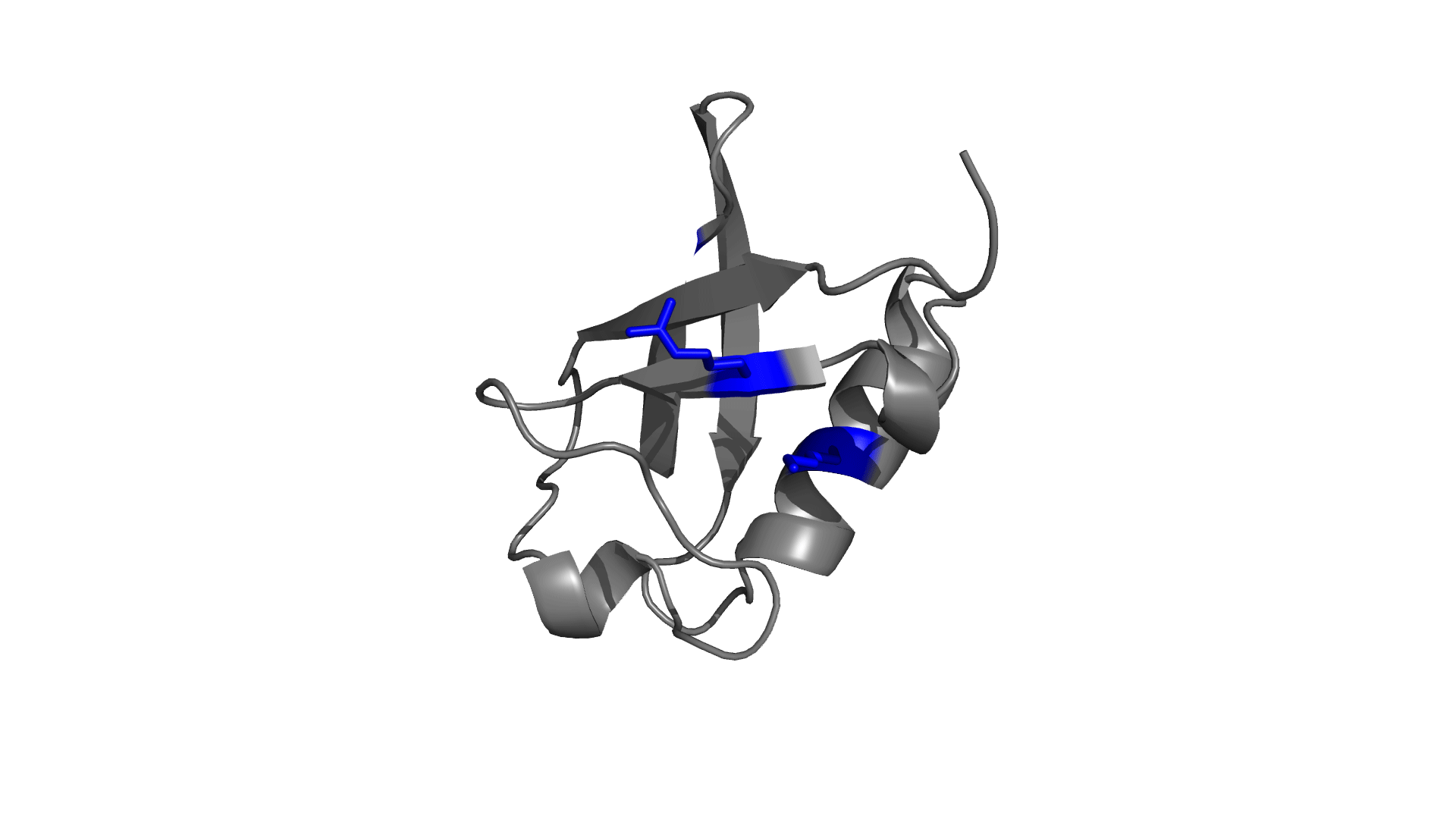A. Questions on Job Submission
>> Why is my PDB file not getting accepted/generating error?
We are employing a structure based statistical mechanical model (WSME) for predicting the folding thermodynamics of protein and mutant(s). So, some constraints on the PDB file (see here) like length of protein, presence of missing atoms etc. have been added to ensure reliability of calculations and model predictions. Look here for more details on errors and warnings generated by the web-server.
>> Do I need to provide my e-mail ID?
Providing e-mail ID is optional but recommended as some jobs might take longer to complete. If an e-mail ID is provided, an automated mail with links to result page and files would be sent on job completion.
>> Why am I not able to retrieve my job?
Jobs are kept in the server for only five days after completion, after which they are permanently deleted. If you are not able to retrieve your job even in the specified time span, please write a mail to us with your job ID.
>> What is mutant index and which file should I refer for it?
Mutant index are identified from MutantIndexFile.txt file which can be downloaded by clicking on ![]() icon. MutantIndexFile.txt contains a list of top 5000 mutants indexed based on the magnitude of the net Debye-Hückel interaction energy (across all charged residue pairs). Thus, mutant index ‘1’ would be electrostatically most stable and ‘5000’ least stable.
icon. MutantIndexFile.txt contains a list of top 5000 mutants indexed based on the magnitude of the net Debye-Hückel interaction energy (across all charged residue pairs). Thus, mutant index ‘1’ would be electrostatically most stable and ‘5000’ least stable.
The mutated residues corresponding to mutant index are also shown as sticks (red colored) in graphical representation and listed on top of the container.
B. Questions on Model Parameters
>> What are the various model parameters employed to predict thermal unfolding profiles and residue folding probabilities?
The WSME model involves four tunable thermodynamic parameters, namely, the interaction energy per native contact (ξ), the entropic cost of fixing a residue in native conformation (Δ𝑆𝑐𝑜𝑛𝑓), effective dielectric constant (εeff), and the heat capacity change upon fixing a native contact (Δ𝐶𝑝𝑐𝑜𝑛𝑡).
- The magnitude of effective dielectric constant is fixed to 29. This estimate robustly captures the changes in stability induced by point mutations involving charged residues (Naganathan AN, 2012; Naganathan AN 2013), the differences in stability between mesophilic and thermophilic protein pairs and even the role of phosphorylation in a disorder-to-order protein switch (Gopi S et al, 2015).
- There are three approaches provided to assign entropic cost to the protein residues and are explained here.
- The heat capacity change upon fixing a native contact is fixed to ~ -0.36 J/(mol. K) per contact (Naganathan AN, 2012).
- Heavy atom contacts are identified with a distance cutoff of 6 Å excluding the nearest neighbors (j>i+1). The interaction energy per native contact (ξ) is tuned to reproduce the experimental Tm provided by the user.
>> How are the entropic costs assigned?
You can choose between the following three options:
- Structure-Based Entropic Cost: An entropic cost of -22.6 J/(mol.K) per residue is assigned for residues identified as coil by STRIDE and -16.5 J/(mol.K) per residue for all other residues (Rajasekaran N et al, 2016).
- Sequence/Structure Independent Entropic Cost: A uniform entropic cost of -16.5 J/(mol.K) per residue is assigned for all residues (Robertson AD & Murphy KP, 1997).
- Sequence/Structure Independent Entropic Cost Except for Glycine and Proline: A uniform entropic cost of -16.5 J/(mol.K) per residue is assigned for all residues except for glycine and proline. For glycine and proline, entropic costs of -29.47 J/(mol.K) per residue and 0 J/(mol.K) per residue, respectively, are assigned (Gὀmez J et al, 1995).
>> How are the mutant structures generated?
Two methods are made available for generating the mutant of interest:
- Generate a mutant by virtually replacing the charge on specific WT residues.
- Generate a mutant by replacing a specific residue on WT structure using PyMOL.
C. General Questions
>> Can I use computationally modeled protein structure as an input for web server predictions?
The server does not differentiate between modeled and experimentally determined protein structures.
>> Why charged residues (+Asn/Gln) are the sole candidate for mutation?
We mutate only the charged residues or large polar residues on the protein surface for three reasons:
(1) Residues on the protein surface are generally polar or charged and exhibit an enhanced probability of mutation during the course of evolution (Lin YS et al, 2007)
(2) It is reasonably straightforward to capture the changes in stability due to the elimination or addition of charge–charge interactions without introducing complex entropy–enthalpy compensations associated with polar - non-polar (or vice versa) substitutions (Naganathan AN, 2012; Naganathan AN 2013).
(3) This approach reduces the phase-space to a more amenable number of mutations compared to the innumerable 20N (where N is protein length) when considering all possible mutations at all sites.
>> Why do the results obtained by generating mutant through virtual charge replacement don’t compare against those obtained by generating mutant using PyMOL?
This arises because of the unavoidable differences in packing introduced while generating mutant structures using PyMOL.

pStab
Prediction of Stable Mutants, Unfolding Curves, Stability Maps and Protein Electrostatic Frustration
Frequently Asked Questions
Protein Biophysics Lab


2017, Maintained by Protein Biophysics Lab, IIT Madras, Chennai-36, India
Last Updated: September 13, 2017